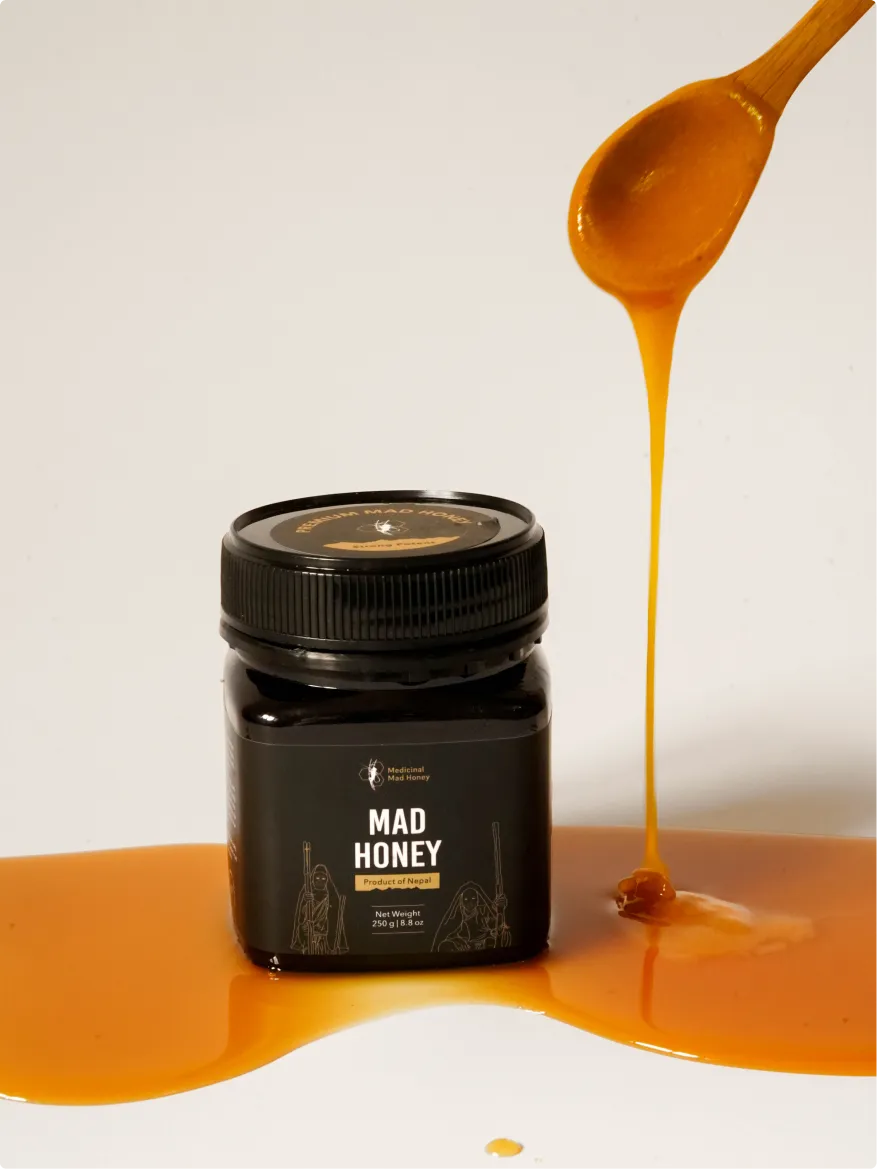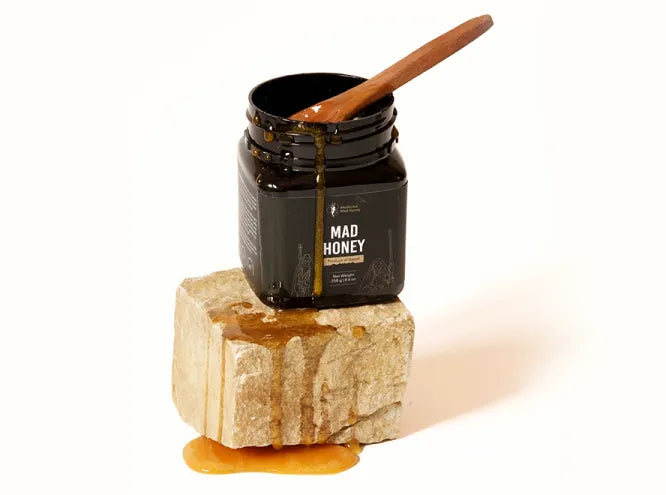Pollination is the process for the continuation of life of plants, and pollinators are the conduits of this important process. Their role, carrying pollen from one plant to other, is what keeps the cycle of life flowing, and the major species upholding nature’s bridge between plants is the wild bee.
These diverse pollinators make about four-fifths of the total pollinators around the globe but the imposing threat of environmental pollution, shrinking habitats, and unsustainable farming practices continues to put their survival at risk.
The major causes behind the declining wild population are reduced floral availability and land-use changes. Implying measures to mitigate these possible reasons through restoration of habitat, resources and careful use of chemicals can help bring the bees' numbers back.
Wild bees
There are an estimated 20,000 species of wild bees globally. Pollination, which when successful, serves as a food source for birds and other species in the wild. Agriculture is dependent on its population, and when their numbers decline, whole ecological cycles can get disturbed. Their importance is significant, and cannot be overstated.
Role in pollination: In plant species whose survival is dependent on cross-pollination, pollinators play the role of natural link between plants. Among other insects, bees play a major role as they transfer pollen from one plant to another, in both wild and agricultural settings, making reproduction among plant species successful.
Apis Laboriosa

An exceptional wild bee species, Apis laboriosa is known for nesting only in the high Himalayas. This rare species is perfectly adapted to the cold climate and cliffside habitats of this particular region. These wild bees produce unique “mad honey” and have no prospect of domestication, meaning, only with the efforts for wild bee conservation, this unique natural treasure can be preserved.
Declining Wild Bee Populations
Over the past few decades, wild bee populations have only shown a concerning decline, that too in several regions of the world. There are studies showing various wild bee species at risk of extinction, with recorded populations dropping by more than 30% in some areas since the 1990s.
In the Himalayan regions, native harvesters who've observed the pattern Apis laboriosa note that the bee hives and colonies living on them have dropped by several folds, reflecting a potent threat to their centuries old honey hunting culture. Globally, long-term monitoring done has revealed that wild bee abundance has only decreased within the last two decades. The numbers are proof of a clear downward trend, and immediate conservation measures are needed to prevent further losses in these vital pollinators.

Causes
The decline of wild bees is what tells the story of their struggle and resilience. The loss of flowers/plants and competition by the invasive species reduces the food source they depend on. The currently increasing forest fires and habitat destruction due to human development projects scatter their homes, while the disappearance of suitable nesting sites and nearby water (needed to cool their nests, feed their young, and stay hydrated) leaves colonies vulnerable. Every challenge, small or large, consistently have complicated the survival of these small pollinators, and that is why it is so important to save their world before it is too late.
Why is Conservation Necessary?
Conservation is necessary because a large portion of fruit set in about 86% of crop systems depends on flower visitation by wild bees. Additionally, bee products like manuka honey, mad honey, and other specialty honeys that we humans have been celebrating for generations can also decline or disappear if we neglect what's going on and let wild bee populations decline.
Strategies to Apply

There are several steps we can take to protect wild bee populations, and each action has a direct impact on the environment and our own lives.
Save their nectar sources:
Flowers and plants of wild are the food source of these bees, and when these disappear, so do the bees. When native plants are planted, and invasive species are not allowed to grow at the expense of the native ones, we ensure that these tiny pollinators have the food they need to survive- and that the fruits and crops we rely on continue to grow.
Avoid use of chemicals:
The areas where bees wander should be made pesticide-free. As these chemicals have the ability to disrupt their gut system, keeping the environment chemical-free is vital to save them.
Support local farmers:
That organic farmer selling at your nearby market is, in fact, helping to save bees. Buying from them supports chemical-free farming, preserves the plants that feed pollinators, and strengthens local biodiversity.
Save their habitat:
Just think of a bee searching for a home in a broken-up landscape. By linking and rebuilding those habitats, we provide a safe habitat for bees to nest and wander. Healthy habitats mean stronger bee colonies, which in turn support the ecosystems that sustain us.
Thoughtful harvesting:
Some wild honey types are harvested only by native honey hunters. Their activities can also hugely determine the sustenance of the wild bees related. Traditional methods were designed keeping this in mind, and continuing the harvesting process without following those methods should be stopped.
Any modern businesses extracting wild honey should not proceed haphazardly, without considering the long-term impact on wild bee populations.
Community engagement:
Protecting the wild bee population is a duty of all of us, a small effort from our side when combined with that of scientists or conservationists, can really break the cycle of decline. Being accountable for the success of conservation programs, planting our own pollinator-friendly gardens, and educating others on how important bees are and their role in the natural world can be some ways to contribute. When people act together, we create landscapes where bees- and humans- can thrive side by side.
Educate Others and Spread Awareness :
Bees need more than just flowers — they need advocates. Use Earth Month as an opportunity to share knowledge with family, friends, and your community. Post on social media, host a garden workshop, or support local environmental campaigns to raise awareness about pollinator protection.
Recommended Read : Is Mad Honey Legal?
Conclusion:
To maintain the existence of these important pollinators and the ecosystems they sustain, a lot of planning is necessary. Wild bees play a major role in the pollination of crops, biodiversity and the multitude of species in any ecosystem. Through specific conservation, habitat restoration, and joint efforts of communities, we can prevent further decline of wild bees and maintain the natural cycles that sustain life on Earth.
FAQs
Q: What is causing the decline of bees?
A: The loss of basic needs, mainly habitat and food source (flowers) that bees can't survive without, is the main cause behind the loss of the bee species. Except for that, other contributing factors include global warming, pesticide use and loss of water sources.
Q: What happens if bees decline?
A: If bees decline, there will be a threat to the running ecosystem, causing severe loss of biodiversity.
Q: How to protect the pollinators?
A: Protecting pollinators involves creating safe habitats, reducing harmful chemicals, and supporting biodiversity. Some effective ways include:
-
Planting native flowers and shrubs that provide nectar and pollen year-round.
-
Avoiding pesticides and herbicides, or using organic alternatives.
-
Providing water sources and safe nesting sites for bees and other pollinators.
-
Supporting local beekeepers and buying sustainably sourced honey.
-
Preserving natural habitats like meadows, forests, and wetlands.
Q: What are the strategies for pollinator conservation?
A: Strategies to conserve pollinators include:
-
Habitat restoration: Planting wildflowers, maintaining forests, and protecting wetlands.
-
Reducing chemical exposure: Limiting pesticide and herbicide use.
-
Sustainable agriculture: Crop rotation, organic farming, and pollinator-friendly practices.
-
Monitoring and research: Tracking pollinator populations and health to guide conservation efforts.
-
Community awareness: Educating people about the importance of pollinators and biodiversity.
Q: How can we protect or help bee populations?
A: Bees, as key pollinators, need both food and shelter. You can help them by:
-
Planting a variety of nectar- and pollen-rich flowers.
-
Providing nesting areas, such as bee hotels or leaving bare soil for ground-nesting bees.
-
Avoiding chemical sprays or switching to natural alternatives.
-
Supporting local and organic honey producers.
-
Participating in or donating to bee conservation programs.
Q: What are some common methods plants use to ensure successful pollination
A: Plants have evolved multiple strategies to increase pollination success:
-
Attracting pollinators: Bright flowers, scent, and nectar rewards.
-
Timing of flowering: Blooming when pollinators are most active.
-
Flower structure: Shapes and colors adapted to specific pollinators (e.g., tubular flowers for hummingbirds).
-
Wind or water pollination: Using natural forces to transfer pollen.
-
Self-pollination: Some plants can fertilize themselves if pollinators are scarce.
Q: What are the 7 steps in pollination?
A: Pollination is the process of transferring pollen to enable fertilization. The typical steps are:
-
Pollen production – Flowers produce pollen in the anthers.
-
Pollen release – Pollen becomes available for transfer.
-
Pollinator attraction – Plants attract pollinators through color, scent, or nectar.
-
Pollen transfer – Pollinators (bees, birds, wind, or water) carry pollen from the anther.
-
Pollen deposition – Pollen lands on the stigma of the same or another flower.
-
Fertilization – Pollen travels down the style to fertilize the ovule.
-
Seed and fruit formation – Fertilized ovules develop into seeds and fruit for reproduction.
Q: How can we prevent pollination?
A: Pollination can be prevented intentionally or unintentionally using methods such as:
-
Bagging flowers: Covering flowers with protective bags to block pollinators.
-
Isolation: Growing plants separately to prevent cross-pollination.
-
Chemical control: Using plant growth regulators to interfere with fertilization (used in hybrid seed production).
-
Timing: Removing flowers before they mature enough to be pollinated.




